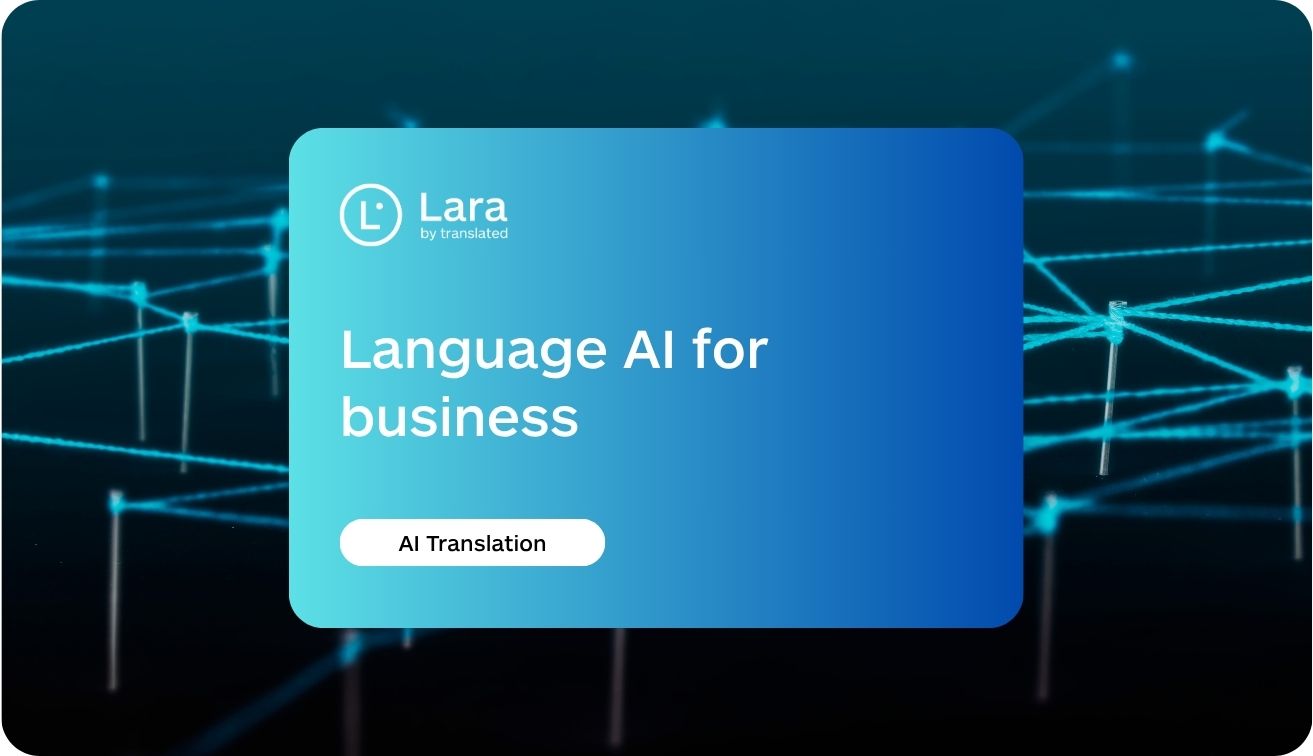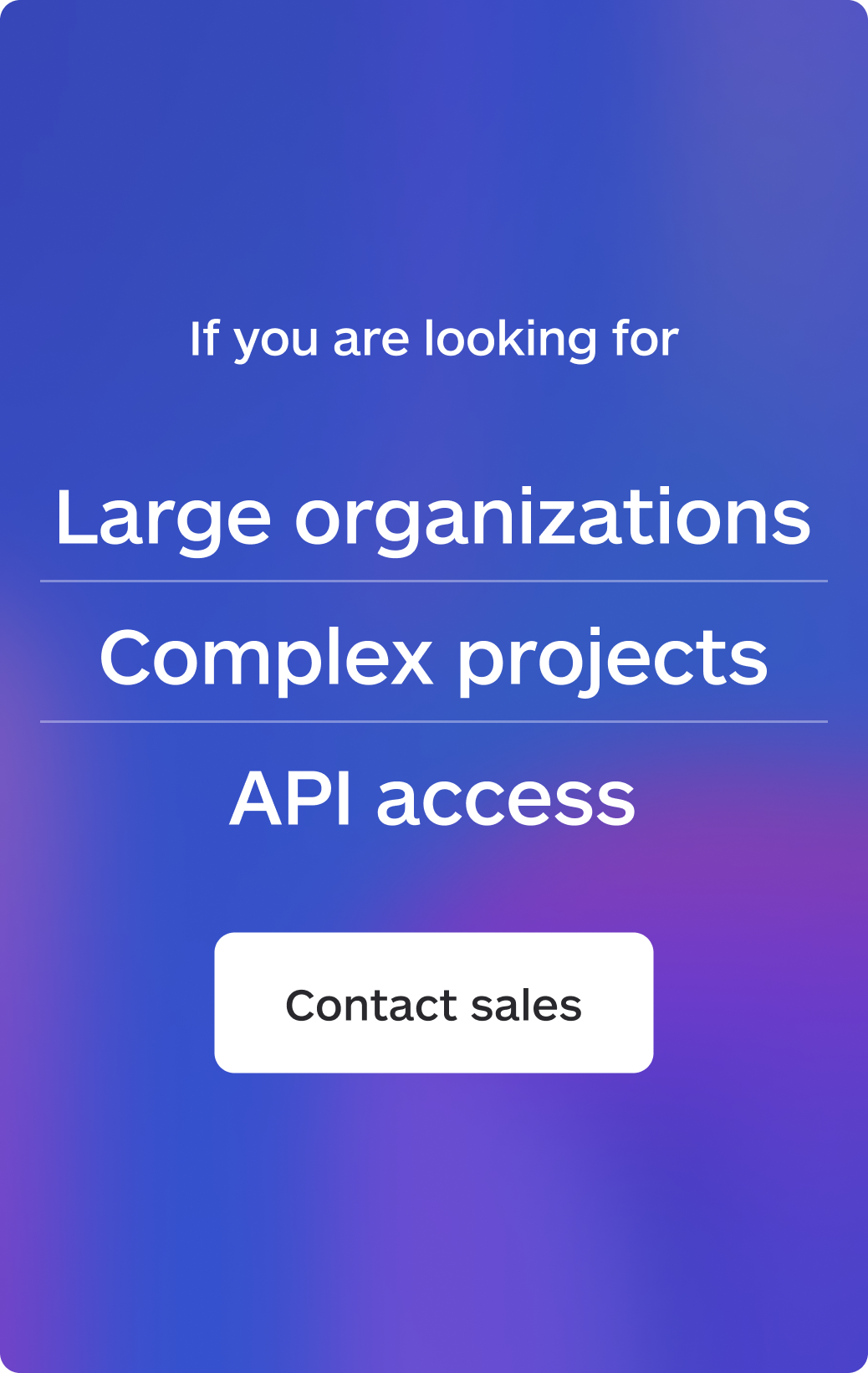Have you ever found yourself stuck in a meeting, email thread, or client call simply because of a language you don’t speak?
In today’s global market, that kind of barrier can slow down deals, confuse teams, or even cost opportunities.
That’s why more and more businesses are turning to AI-driven language solutions, not just to translate words, but to build real understanding across borders. Language AI is becoming a game-changer for companies looking to communicate clearly, inclusively, and effectively on a global scale.
Understanding the impact of communication challenges in business
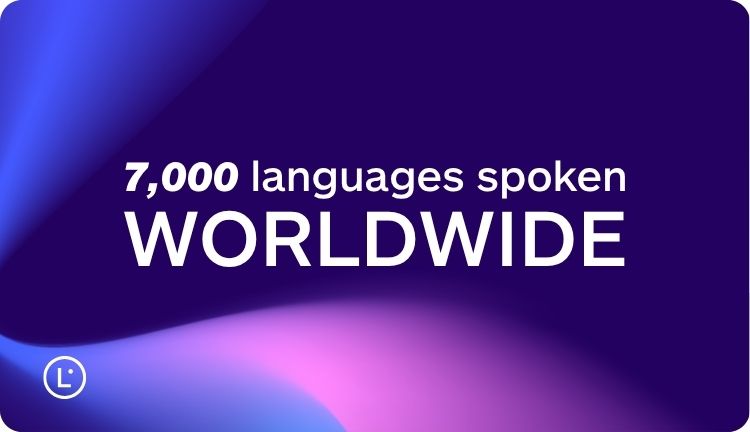
Before exploring solutions, it’s important to recognize the scale of the problem. With over 7,000 languages spoken worldwide, businesses operating internationally face significant hurdles when communicating with partners, clients, and team members across different linguistic backgrounds. These challenges manifest in numerous ways:
- Misunderstandings that lead to costly errors in operations or product development
- Delays in decision-making due to translation bottlenecks
- Inability to effectively enter new markets due to language limitations
- Difficulties in building cohesive remote teams across multiple countries
- Lost opportunities when potential clients or partners prefer to communicate in their native language
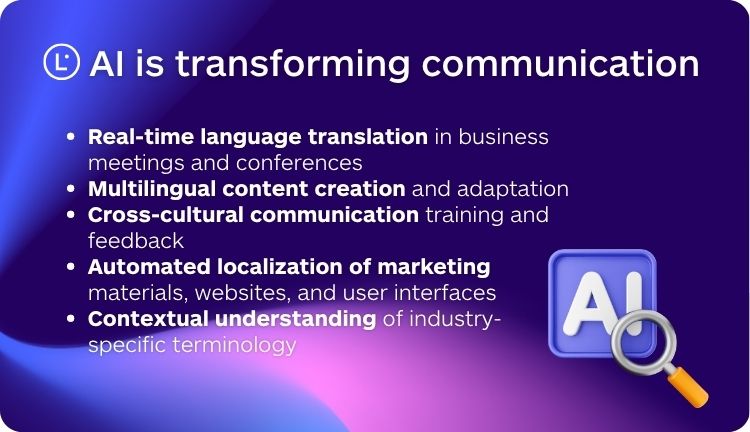
Research shows that language barriers cost businesses significantly—both in measurable financial terms and in less tangible aspects like team cohesion and brand perception. According to a CSA Research study, 76% of consumers prefer to buy products with information in their native language, while 40% will not purchase from websites that aren’t available in their primary language.
How AI is transforming corporate communication
The integration of AI to solve communication issues has revolutionized how businesses approach multilingual engagement. Unlike traditional translation methods that were often slow, expensive, and prone to errors, modern language AI solutions offer near-instantaneous, increasingly accurate, and contextually aware translations.
The foundation of these advancements lies in natural language processing (NLP), a branch of artificial intelligence focused on enabling computers to understand, interpret, and generate human language in useful ways. Modern NLP models leverage deep learning techniques to grasp not just the literal meaning of words, but also the contextual nuances, idiomatic expressions, and cultural references that make human communication so rich and complex.
Corporate communication AI tools now go far beyond simple word-for-word translation to include:
Key benefits of language AI for business communication
The implementation of language AI solutions offers numerous advantages for businesses of all sizes. Here are some of the most significant benefits of AI in global communication:

Enhanced efficiency and productivity
By automating translation processes, language AI dramatically reduces the time and resources required to communicate across languages. Documents that once took days to translate can now be processed in minutes, allowing teams to focus on high-value tasks rather than linguistic challenges.
Expanded market reach
With the ability to easily localize content for different regions, businesses can enter new markets more effectively. This capability is particularly valuable for e-commerce platforms and digital services, where reducing language barriers with AI can directly impact conversion rates and customer acquisition.
Improved internal collaboration
One area where language AI improves internal communication is in multinational teams. By providing real-time translation during meetings and for written communications, AI tools ensure that all team members can contribute equally, regardless of their native language. This inclusivity leads to more diverse perspectives and better decision-making.
Cost reduction
While human translation remains essential for certain contexts, AI business communication solutions can significantly reduce localization costs, especially for high-volume content. By automating routine translations and reserving human expertise for more nuanced communications, businesses can achieve a balance of quality and efficiency.
Consistency across communications
Enterprise AI tools help maintain consistency in terminology and brand voice across all languages, ensuring that corporate messaging remains clear and on-brand regardless of the target audience.
Lara Translate: advancing multilingual business communication
Among the leading AI communication platforms for companies, Lara Translate stands out for its specialized approach to business translation needs. Built on advanced Machine Translation technology, Lara’s system is specifically designed to handle the nuances of business communication across multiple languages.
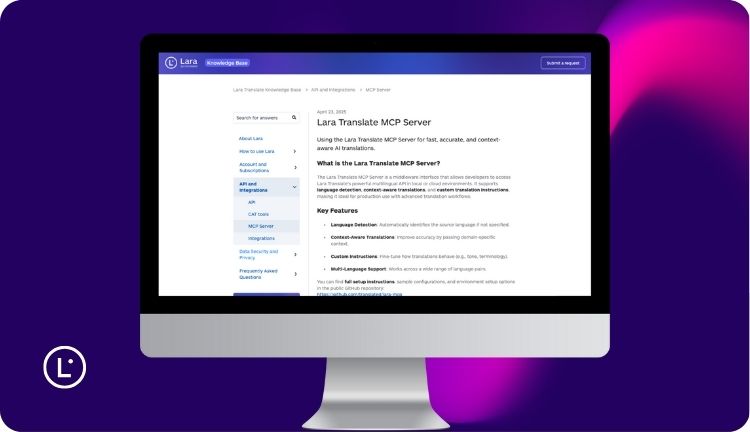
What distinguishes Lara Translate is its Model Context Protocol (MCP) Server, which enables contextually rich translations that maintain professional terminology and brand-specific language.
Lara’s technology excels at preserving the intent and tone of the original message—a crucial factor for business communications where subtleties matter. Unlike generic translation tools, Lara’s system is trained on professional business content, ensuring more accurate and appropriate translations for corporate use.
Real-world applications of AI in corporate communication
Understanding how companies implement language AI for business communication in practice helps illustrate its transformative potential:
Virtual meetings and conferencing
With the rise of global remote work, real-time language translation in business meetings has become essential. AI-powered platforms now offer live captioning and translation during video conferences, allowing participants to follow discussions in their preferred language without disruption.

A global manufacturing company implemented this technology for their weekly leadership calls spanning three continents, resulting in a 40% increase in participation from non-English speaking team members and faster alignment on cross-regional initiatives.
Customer support and engagement
AI chat platforms with multilingual capabilities have transformed customer service operations. Businesses can now provide support in multiple languages without maintaining separate teams for each language, ensuring consistent quality regardless of the customer’s location or language preference.
An international e-commerce retailer deployed multilingual AI chatbots across their platforms, enabling them to offer 24/7 support in 15 languages. This implementation led to a 35% reduction in support costs while increasing customer satisfaction ratings in non-English markets.
Document translation and knowledge sharing
For companies with global operations, sharing information across language barriers is a constant challenge. AI business communication solutions automate the translation of internal documents, training materials, and knowledge bases, ensuring that valuable information is accessible to all employees.

A pharmaceutical company utilized language AI to translate their extensive research database and regulatory documentation, reducing translation time by 80% and enabling faster collaboration between research teams in different countries.
Cross-border negotiation and partnership development
Building relationships across cultural and linguistic boundaries requires nuanced communication. Cross-border communication with AI tools supports these sensitive interactions by providing accurate, contextually appropriate translations that respect cultural differences.
An investment firm specializing in international mergers found that using advanced language AI during negotiations increased deal completion rates by 25% in regions where English proficiency was limited, attributing the improvement to clearer communication and fewer misunderstandings.
Challenges and considerations when implementing Language AI
While the benefits are compelling, businesses should be aware of several key considerations when adopting language AI for business communication:
Quality and accuracy
Despite remarkable advances, AI translation still has limitations, particularly with highly specialized terminology, cultural idioms, or creative content. Critical communications may require human review to ensure accuracy and appropriate cultural context.
Data security and confidentiality
Business communications often contain sensitive information. When selecting enterprise AI tools, organizations must carefully evaluate security measures, data handling practices, and compliance with relevant regulations.
Integration with existing systems
For maximum efficiency, language AI solutions should integrate seamlessly with existing communication platforms, content management systems, and workflow tools. Compatibility and API availability are important factors to consider.
Training and adoption
Like any new technology, successful implementation depends on user adoption. Companies should provide adequate training and support to help employees incorporate AI business communication solutions into their daily workflows.
Future trends in language AI for business
The landscape of language AI for business communication continues to evolve rapidly. Several emerging trends are worth monitoring:

- Multimodal AI: Systems that can process and translate both text and speech simultaneously, with an understanding of visual context.
- Emotional intelligence: AI tools that detect and appropriately convey emotional nuances across languages, improving the effectiveness of cross-cultural communication.
- Domain-specific models: Increasingly specialized AI systems trained for specific industries, ensuring more accurate translations of technical terminology and sector-specific concepts.
- Decentralized solutions: Secure, privacy-focused AI translation tools that process data locally rather than sending it to external servers.
- Augmented reality integration: Real-time translation overlays in AR environments, facilitating face-to-face multilingual interactions without disruption.
Integrating language AI into your business strategy
For companies looking to leverage language AI to overcome communication challenges, a strategic approach is essential:
- Assess current communication bottlenecks: Identify where language barriers are creating the most significant issues in your organization.
- Define clear objectives: Determine what you want to achieve with language AI—whether it’s improving internal collaboration, enhancing customer experience, or expanding into new markets.
- Select appropriate tools: Choose solutions that address your specific needs, integrate with your existing systems, and offer the right balance of accuracy, speed, and security.
- Start with pilot projects: Implement language AI in controlled environments to evaluate effectiveness and gather user feedback before rolling out more broadly.
- Combine AI with human expertise: Recognize that while AI can handle many translation tasks, human linguists remain essential for sensitive communications, creative content, and cultural adaptation.
FAQs
How accurate is AI translation for business documents?
AI translation has improved dramatically in recent years, with accuracy rates now exceeding 90% for many language pairs. However, the accuracy varies depending on the complexity of the content, industry-specific terminology, and the language combinations involved. For critical business documents, a hybrid approach combining AI translation with human review often delivers the best results.
Can language AI handle industry-specific terminology?
Most advanced language AI platforms can be trained or fine-tuned with glossaries containing industry-specific terms, ensuring consistent and accurate translation of specialized vocabulary. Solutions like Lara Translate offer custom terminology management features specifically designed for business contexts.
How do companies measure the ROI of implementing language AI?
Businesses typically measure ROI through metrics such as time saved on translation tasks, reduction in translation costs, increased engagement in international markets, improved collaboration efficiency in multilingual teams, and higher customer satisfaction scores in non-native language regions.
What security measures should companies consider when using language AI tools?
Key security considerations include data encryption (both in transit and at rest), clear data retention policies, compliance with regional privacy regulations like GDPR or CCPA, access controls, and transparency about how translation data is used for model improvement.
How does language AI impact the role of human translators in business?
Rather than replacing human translators, language AI is transforming their role. Professional linguists now focus more on high-value tasks such as creative content adaptation, cultural consulting, post-editing AI translations for nuanced communications, and developing specialized glossaries that improve AI performance.
This article is about:
- How language AI helps companies overcome communication barriers
- Key benefits of AI in global business communication
- Real-world applications of AI tools in corporate settings
- Strategies for implementing AI-powered communication platforms
- The evolving role of human translators alongside AI
Useful articles
- Best AI Tools for Business in 2025: The Ultimate Guide
- The Role of AI in Preserving Endangered Languages
